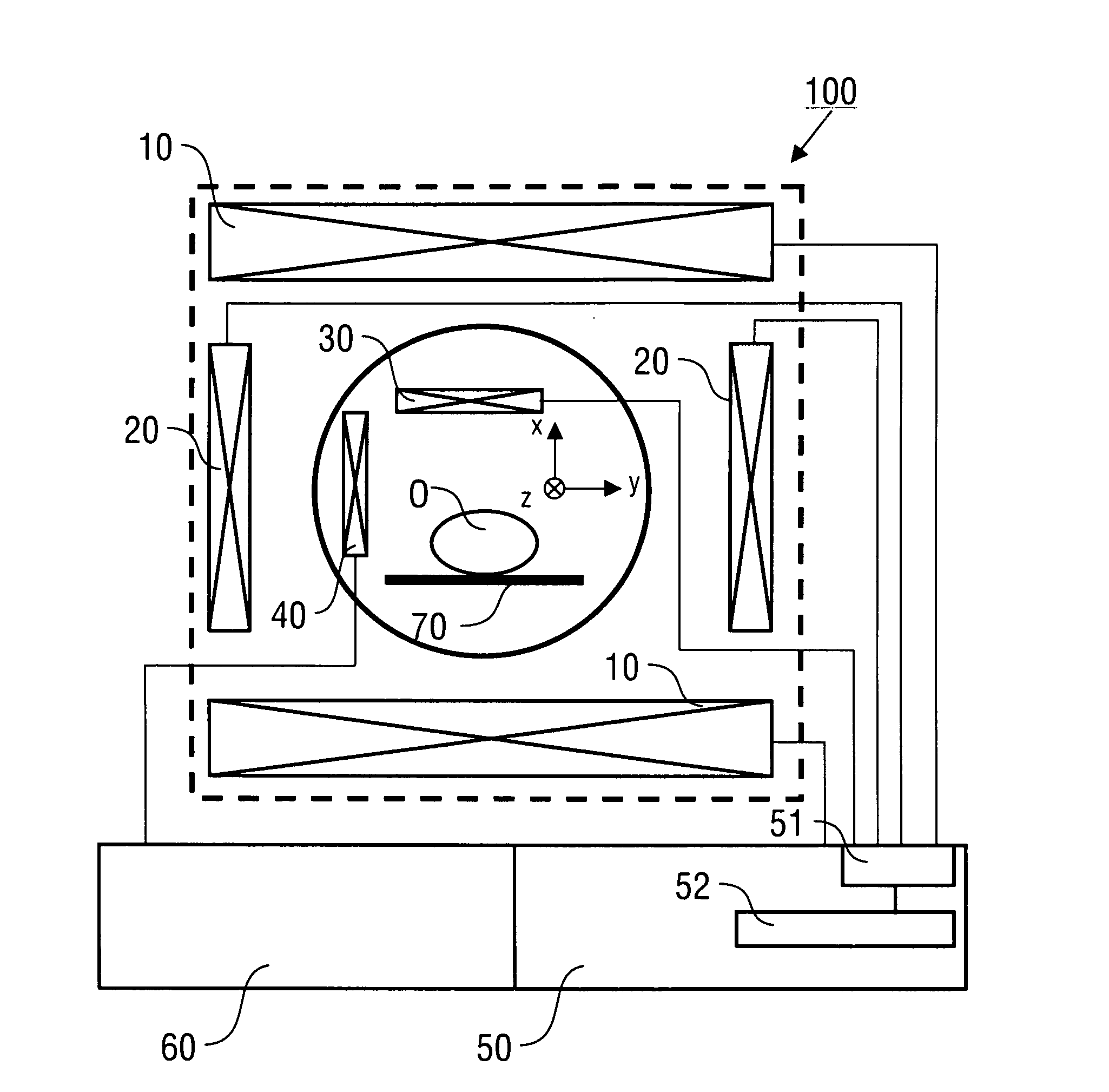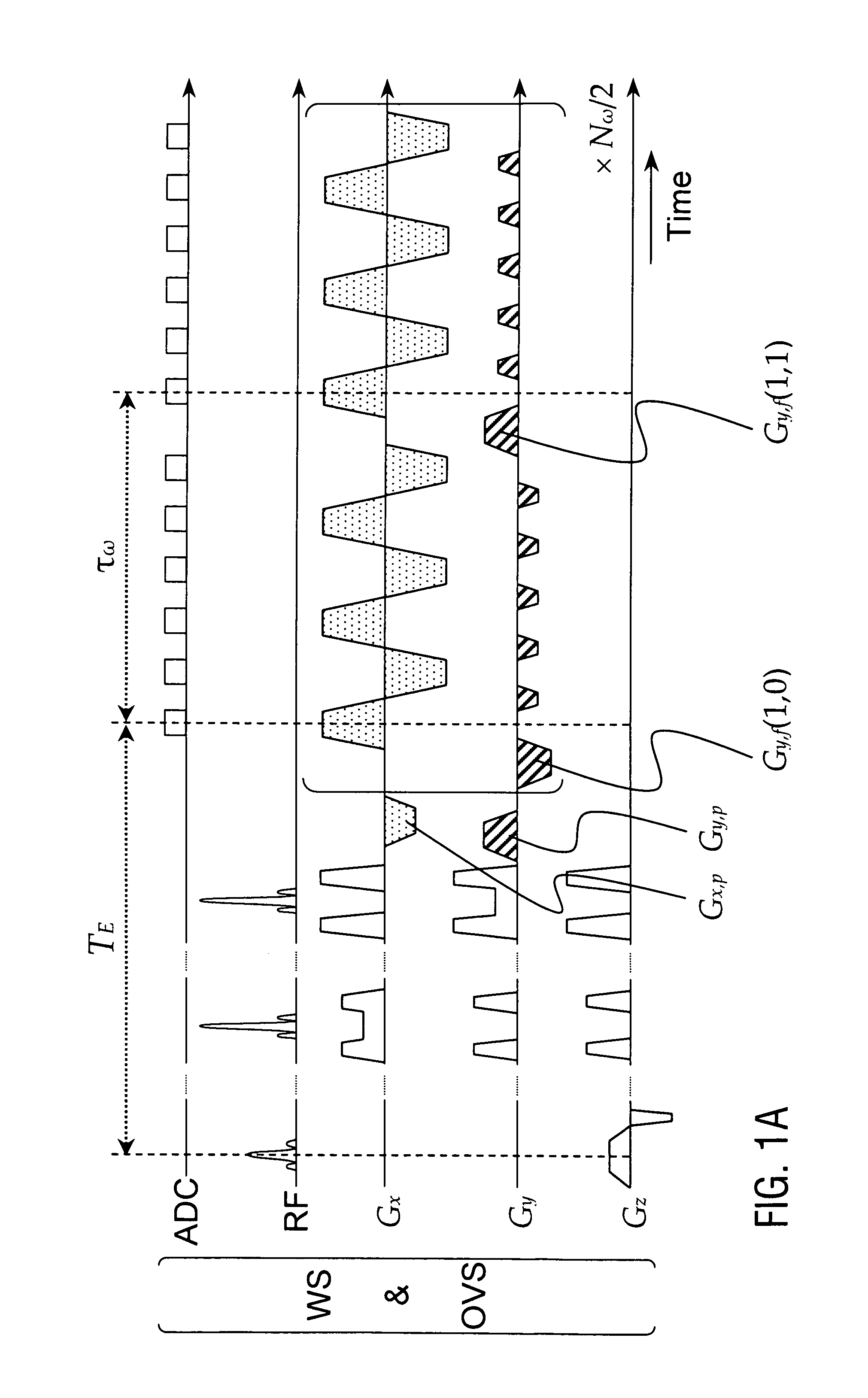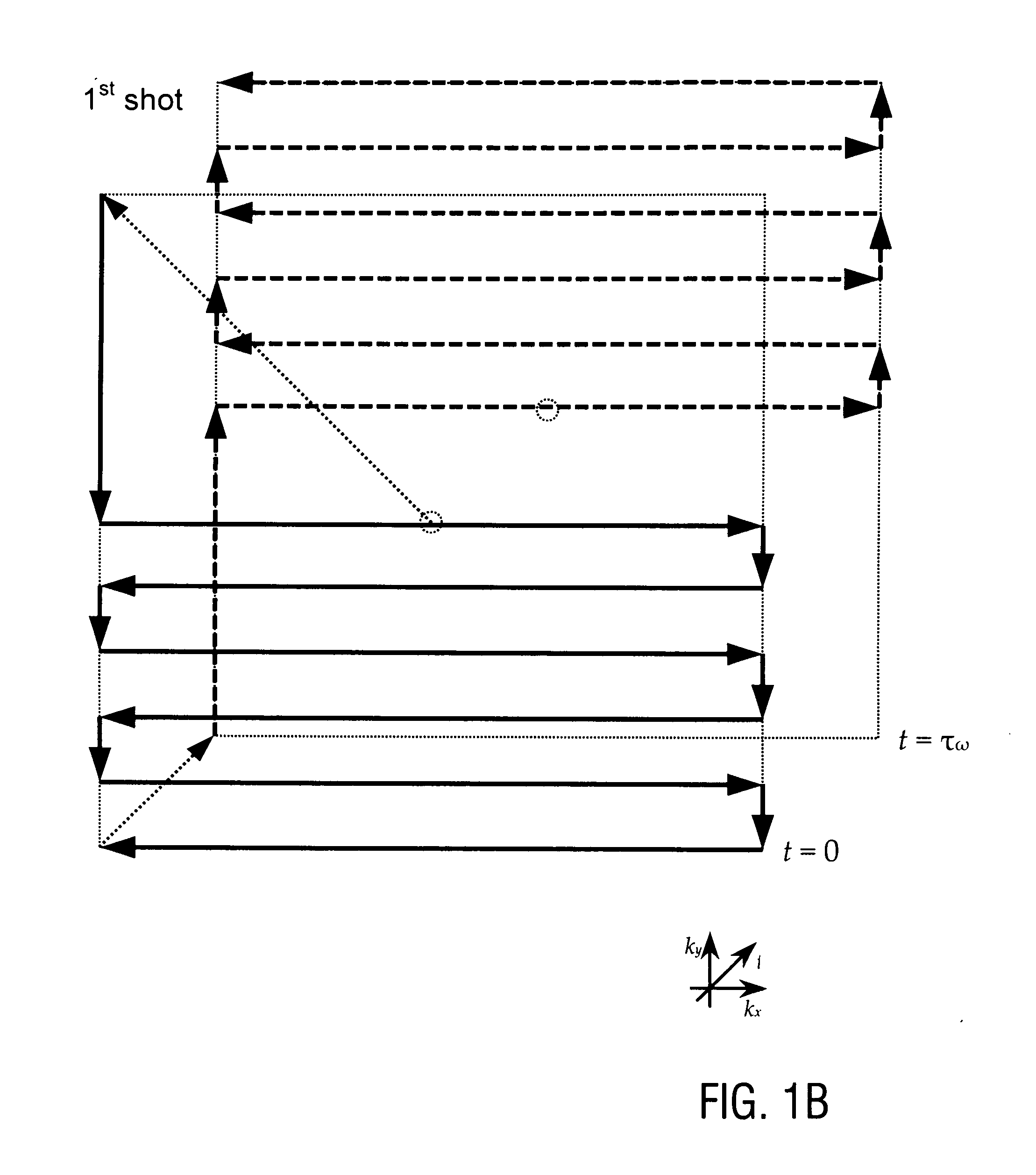Method and device for magnetic resonance spectroscopic imaging
a magnetic resonance and spectroscopic imaging technology, applied in the field of magnetic resonance spectroscopic (mrs) imaging, can solve the problems of doubling the dwell time, producing aliasing artifacts, and periodic mismatches between odd- and even-numbered echoes, etc., and achieves the effect of adsorption
- Summary
- Abstract
- Description
- Claims
- Application Information
AI Technical Summary
Benefits of technology
Problems solved by technology
Method used
Image
Examples
Embodiment Construction
[0101]Preferred embodiments of the invention are described in the following with particular reference to the construction of the excitation and encoding sequences. Timing sequences are graphically represented as introduced in standard publications. Details of creating the RF pulses and gradients of these sequences, collecting the MR signals and controlling an MR scanner as well as details of the construction of an MR scanner are not described as far as they are known from PCT / EP 2009 / 002345 (introduced to the present specification by reference) or from conventional MR imaging techniques. Furthermore, after reconstructing the at least one spectroscopic image of the object, the image can be subjected to a further image processing or image recording, displaying, storing, or printing as it is known in prior art.
SCEPSIS Method
[0102]FIG. 1 shows a basic RF and gradient pulse sequence diagram of the first sampling sequence (FIG. 1A) and the corresponding first sampling trajectories in k-sp...
PUM
 Login to View More
Login to View More Abstract
Description
Claims
Application Information
 Login to View More
Login to View More - R&D
- Intellectual Property
- Life Sciences
- Materials
- Tech Scout
- Unparalleled Data Quality
- Higher Quality Content
- 60% Fewer Hallucinations
Browse by: Latest US Patents, China's latest patents, Technical Efficacy Thesaurus, Application Domain, Technology Topic, Popular Technical Reports.
© 2025 PatSnap. All rights reserved.Legal|Privacy policy|Modern Slavery Act Transparency Statement|Sitemap|About US| Contact US: help@patsnap.com



